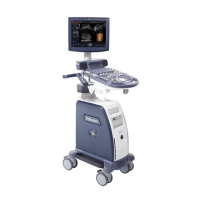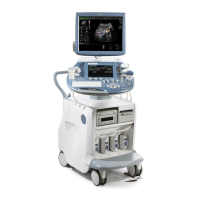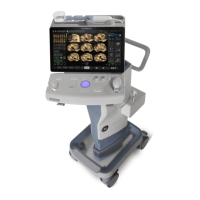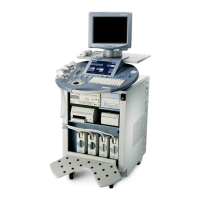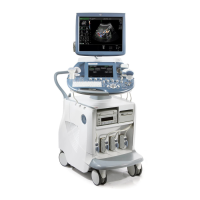GE DRAFT VOLUSON™ P8/VOLUSON™P6
DIRECTION 5775469, R
EVISION 3 DRAFT (JULY 19, 2018) BASIC SERVICE MANUAL
Chapter 5 - Components and Functions (Theory) 5-13
5-2-3-1-1 Special B-Mode Techniques
a.) HI
(Coded Harmonic Imaging):
In one method of HI the RX-Frequency is doubled, so that the radial resolution is increased
due to the higher RX-Frequency.
The second method of HI is pulse-inversion: 2 TX-Beams are shot to the same Tissue-location,
one with positive, one with negative polarity. The subtraction of both shots (Subtraction Filter)
brings to bear the nonlinear-echo-reflection-properties of the tissue (especially in usage of
Contrast-medias), which is very useful with extremely difficult-to-image patients.
b.) XBEAM CRI
(CrossBeam - Compound Resolution Imaging):
Does not need any special functions of DRFG.
Image is composed of more than one different-direction-steered images. PC-calculated.
5-2-3-2 M-Mode
1.) DRFG
see: Section 5-2-3-1 "B-Mode" on page 5-12
a.) DMA section
B-mode-Data is written via SP0 into SDRAM Fifo Buffer memory. DMA Controller 1 transfers
the data into SOM (System-On-Module) main memory where scan conversion is performed
per software, i.e. the sweep image is generated (scaling and interpolation between lines).
CineMode: CineMode-Memory is the SOM main memory.
5-2-3-3 D-Mode (Pulsed Wave- and Continuous Wave Doppler)
1.) DRFG
- PRF-generator; see: Section 5-2-3-1 "B-Mode" on page 5-12
- After DC-cancelling the signal is mixed with RX-Frequency and brought to LF-Spectrum,
where the LowPassFilter cuts HF.
Mixer and Magnitude-Calculator arrange Complex Demodulation.
a.) DMA section
D-mode-Data is written via SP0 into SDRAM Fifo Buffer memory. DMA Controller 1 transfers
the data into PC main memory where FFT and scan conversion is performed per software,
i.e. the sweep image is generated (scaling and interpolation between lines).
CineMode: CineMode-Memory is the SOM main memory.
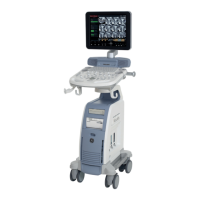
